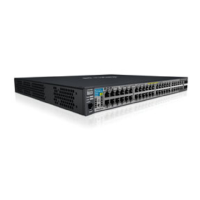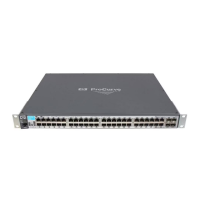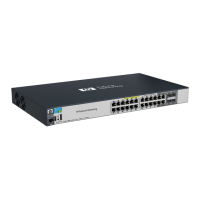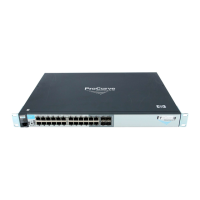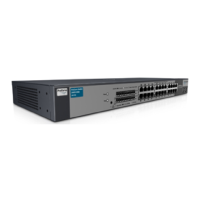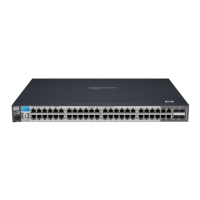IPv6 Addressing
Address Types and Scope
Address Types and Scope
Address Types
IPv6 uses these IP address types:
■ Unicast: Identifies a specific IPv6 interface. Traffic having a unicast
destination address is intended for a single interface. Like IPv4 addresses,
unicast addresses can be assigned to a specific VLAN on the switch and
to other IPv6 devices connected to the switch. At a minimum, a given
interface must have at least a link-local address. To send or receive traffic
off of a VLAN, an interface must also have one or more global unicast
addresses.
■ Multicast: Provides a single destination address for traffic intended for
all members of a group, and provides a means for reducing unnecessary
traffic to interfaces that do not belong to a given multicast group. Member-
ship in a group can be determined by request or by a characteristic, such
as all nodes, all routers, or all routers of a given type. Multicast traffic can
be generated by a single source or multiple sources, but in either case is
intended for multiple destinations.Common types of multicast traffic
include streaming video and audio to multiple receivers who have joined
a specific group from diverse locations.
Note Unlike IPv4, broadcast addresses are not used in IPv6. Multicast addresses
are used instead. For more on this topic, refer to “Multicast Application to
IPv6 Addressing” on page 3-21.
■ Anycast: A single address of this type can be assigned to multiple
interfaces, possibly on separate devices within a defined address scope,
where any of the interfaces having the anycast address can provide the
desired service or response. A packet sent to a given anycast address is
delivered only to the nearest interface having an instance of the address.
This option is useful where multiple servers provide the same service, and
it does not matter to the client which source it uses to acquire the service.
Anycast usage can be of value, for example, in a network supporting
multiple DNS servers. Refer to “Anycast Addresses” on page 3-20.
A given interface can have only one link-local address, but can have multiple
unicast and anycast addresses.
3-10

